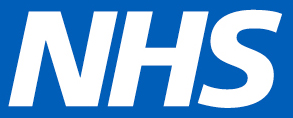More than one million participants took part in over 5,200 National Institute for Health and Care Research (NIHR) delivered, UK-wide studies in 2022/23.
When you stop to think about the amount of data retrieved, collected, and analysed for those studies it is clearly massive. To support those studies data will have been in part extracted from hospital and GP systems and others.
In many cases, it will have been anonymised and in others, additional data will have been collected from consenting participants. So, there will have been a lot of data in various forms being moved around between researchers and organisations.
One of the most common forms of data breach is data being sent to the wrong place or person. Other data breaches occur when data stores are hacked or when data is left behind after a project has finished and the security around it is perhaps laxer, or it is left on laptops, portable hard drives, or memory sticks.
Given the number of emails, data file transfers and other methods of managing data associated with research studies, it is remarkable that things don’t go significantly wrong very often. This is a credit to the professional and conscientious way that researchers and others handle data they are entrusted with. However, there is a new and more secure way to manage data for research being put in place…
The NHS has embarked on an ambitious programme of developing a small number of ‘Secure Data Environments’ (SDEs) in support of research. These will in time provide a number of benefits to the research community such as swifter access to data they require, but also will significantly reduce the amount of data that is being shared around the system in support of current research activities. This is because they will ‘bring the researchers to the data, rather than send the data to the researchers’.
Researchers will be given secure access to the data they have been approved to use for their studies along with the tools with which they need to analyse the data. Therefore, they won’t need to have many NHS and other organisations email them a small piece of the data ‘jigsaw’ that they need for their study. They won’t need to store it on servers in their organisation, they won’t need to keep a copy of some or all the data on a laptop or memory stick/portable hard drive.
Of course, no security is 100% guaranteed, putting much of the data that is currently being sent around in one place, does require that one location to be very secure and it is crucial the SDEs invest in appropriate security measures and practices and evaluate their effectiveness. As that sort of security is being put in place, then in general terms the security of the data overall will be significantly improved and that is a key message to the public who are entrusting their data for use in research activities that should encourage them to have increased faith in the system to protect their data.
For more information on Secure Data Environments, please









